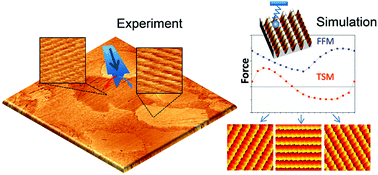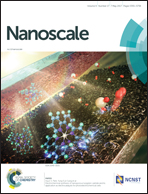A molecular-scale portrait of domain imaging in organic surfaces†
Abstract
Progress in the general understanding of structure–property relationships in organic devices requires experimental tools capable of imaging structural details, such as molecular packing or domain attributes, on ultra-thin films. An operation mode of scanning force microscopy, related to friction force microscopy (FFM) and known as transverse shear microscopy (TSM), has demonstrated the ability to reveal the orientation of crystalline domains in organic surfaces with nanometer resolution. In spite of these promising results, numerous questions remain about the physical origin of the TSM domain imaging mechanism. Taking as a benchmark a PTCDI-C8 sub-monolayer, we demonstrate experimentally and theoretically that such a mechanism is the same atomic scale stick-slip ruling FFM leading to the angular dependence of both signals. Lattice-resolved images acquired on top of differently oriented PTCDI-C8 molecular domains are crucial to permit azimuthal sampling, without the need for sample rotation. The simulations reveal that, though the surface crystallography is the direct cause of the FFM and TSM signals, the manifestation of anisotropy will largely depend on the amplitude of the surface potential corrugation as well as on the temperature. This work provides a novel nanoscale strategy for the quantitative analysis of organic thin films based on their nanotribological response.



 Please wait while we load your content...
Please wait while we load your content...